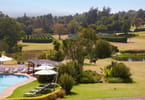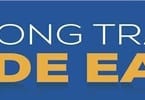The operating environment for travel and hospitality companies, such as airlines and hotels, steadily evolves. More frequent travel and more emerging market travelers present new opportunities. At the same time the growth of sharing business models, like AirBnB, and low cost competitors, raises new questions about what customers truly value.
To reflect these commercial realities, companies need to revisit what is offered by a loyalty program to ensure it serves the purpose of maintaining a strong brand connection with customers. In recent years, loyalty programmes across industries have ceased to be differentiators, devolving from instruments that actually drive loyalty to ways for brands to compete by simply offering the most ‘reward.’
“To truly inspire greater share of wallet, companies need to break free from current thinking, where loyalty programs equate to a kick-back for reaching certain thresholds of activity,” said Alan Casey, an Associate Partner in Prophet’s Hong Kong office. “They need to offer meaningful benefits that enhance the overall experience”
Do we know what will bring success for valued loyalty programmes in today’s travel landscape? The fundamental dictum: understand what actually drives customer behaviour and rethink the role of the programme in delivering against it.
Companies first need to know what their customers value, and understand that they probably don’t all value the same things. This understanding can be achieved by segmenting the customer base properly: who are the different groups that often use your services? Do they have different travel profiles and needs, and what value do they bring to the company?
Next, carefully align the benefits offered: which benefits matter to whom? Use customer insights to drive the structure of the program, developing tiers that match as closely as possible a given customer profile to their most valued customer experience elements.
Finally, offer flexibility and breadth. One of the most common customer requests is for more control and a sense that they have access to a wide range of relevant benefits.
Recently Cathay Pacific to update its Marco Polo Club loyalty program through analysis that helped redefine customer tiers. The revamped scheme uses club points to replace club miles and sectors, providing benefits and a customer experience more accurately aligned with customer profiles and needs. New rewards for mid-tier customers were also introduced to create more reasons to continue to use the brand.
Brands like Marriott and Starwood have also developed highly rated loyalty programs by listening to customer needs. They have innovated ways to offer greater flexibility, additional services and even curated experiences that could not be accessed elsewhere, such as SPG Moments which enables top tier members VIP access to key events.
The recently announced merger of Marriott and Starwood has sparked speculation about the future of the merged group’s loyalty scheme and what role it will play in future. It remains to be seen if they further invest in a combined loyalty program or decide to scale back current benefits as the two chains are integrated. Will they find the right formula? Travelers will make up their own minds, ultimately voting with their wallets.
WHAT TO TAKE AWAY FROM THIS ARTICLE:
- To reflect these commercial realities, companies need to revisit what is offered by a loyalty program to ensure it serves the purpose of maintaining a strong brand connection with customers.
- One of the most common customer requests is for more control and a sense that they have access to a wide range of relevant benefits.
- Use customer insights to drive the structure of the program, developing tiers that match as closely as possible a given customer profile to their most valued customer experience elements.






















